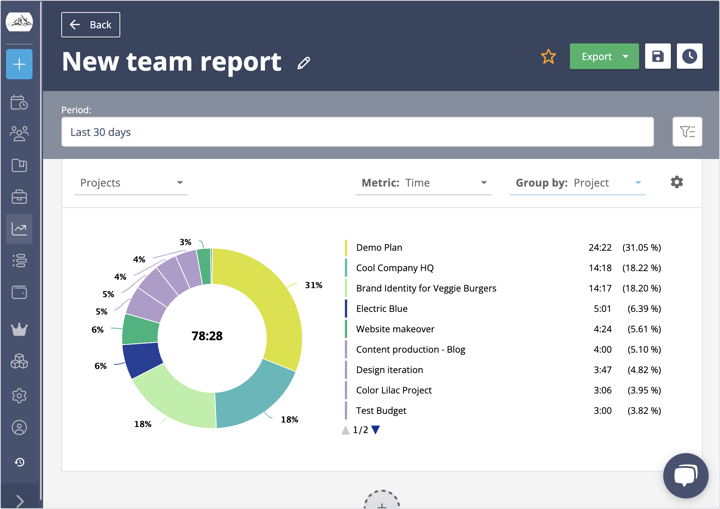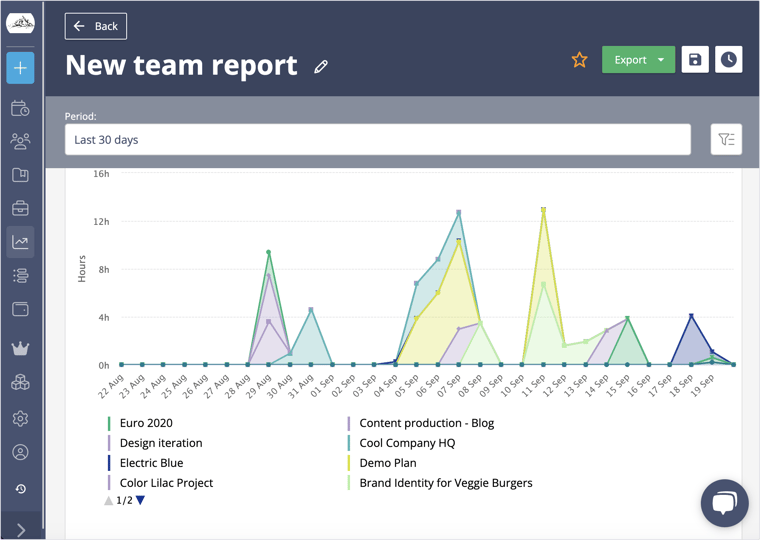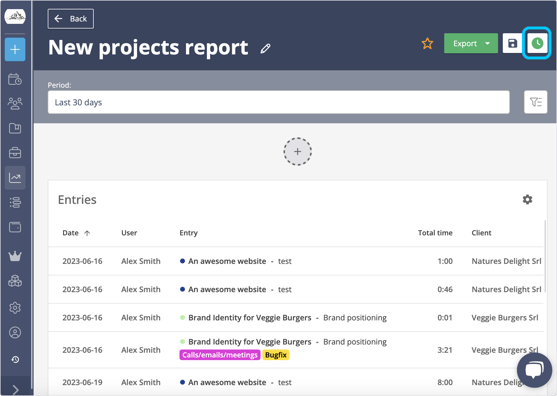As Peter Drucker famously said, “What gets measured gets improved”. After all, what’s the point of tracking time if you don’t gather useful insights from it?
Here’s how you can use Timeneye to audit how you spent your time, by using Timeneye’s reporting features.
These and other productivity tips for professionals available here on our blog. Subscribe to get them all!
What’s a Time Audit?
A time audit is an alanysis of how you use your time. It should help you better understand exactly where you spent your time. By knowing where and how you’ve spent your time and what you’ve been working at, you can compare the data with your goals and expectations.
A time audit is a useful tool to make improvements to your time management, cut the guesswork in your estimates, and set more realistic productivity goals.
Since time is a limited and precious resource, making a habit of tracking your time is the first step to use it more effectively. But simply tracking isn’t enough: you also need to visualize how you spend your time and gather insights on how much effort you put into each project.
How to do a time audit with Timeneye
Luckily, you can do it easily from your Timeneye workspace, by using one of the many reporting features. This is what you need to start your time audit:
Step 1: write down your goals and plans
Before you begin your audit, you have set up a plan for what you’ll be working on. Simply write down your goals on paper (or else) and set them aside for when you’ll carry out your time audit – you’ll need them to compare what you planned to work on with what you actually did.
Step 2: track your time
To gather data that are actually meaningful, you need to track your time consistently for a period of time. You can do that easily by using a time tracking tool like Timeneye.
Instead of manually entering your time, using the timers feature: you’ll be able to start tracking time as soon as you begin working, leaving the timer track in real-time, and then stop when you’ve finished. It’s way more accurate than estimating (“I spent 1 hour doing X…) and registering time manually.
Wait! What if I forget to track my time?
I know, sometimes tracking time can be a pain. If you don’t constantly track your time, you’ll end up with incomplete data.
To remember to track your time, you can:
- Get yourself an accountability partner – a colleague, or a friend, that helps you remind you to track time;
- Set up the Daily reminder email in Timeneye. This feature (available from the “User settings”) sends you an email when the system detects that you’ve tracked less than your usual time for the day. In this case, Timeneye becomes your accountability partner!
- Make sure to fit tracking time in your daily workflow. You can integrate Timeneye with the tools you’re already using, download the time tracking apps for mobile for tracking on the go, and install the Timeneye Browser extension to track time everywhere on the web.
Step 3: run a report of your time
This is where Timeneye steps in to help you audit your time. Head to the Reports section of the workspace. Here, you can run a report on your user, by setting up the timeframe of your experiment as a filter.
The first set of data you’ll see in the reports are the total time tracked and the week day average. This will immediately give you an idea of how much time you’ve tracked and dedicated to this experiment.

Further down the report is where things get really interesting, in the Projects chart, you’ll see exactly the project you’ve worked on, and how much time you allocated to each.

From there you can start analyzing how much time, in proportion, you’ve allocated on each project: which one caught most of your time? Were there days or weeks when one activity seemed to have capitalized your time?
Finally, you should proceed to extract a list of all the activities you tracked in detail. Click on the Total time box, and you’ll see the list of all the time entries that provided the data for your report. Click Export to save the data to CSV.

Step 4: adjust and repeat
Now that you know you actually spent your time, go back to the goals you’ve previously set and written down. Did you work on the projects as you planned to? What activity took too much of your time? Which were the days that you overworked, or under-worked?
After analysing your time, you’ll know if you’ve met your goals, and where you have to make adjustments or improvements.
Make a habit of auditing your time to make sure all your work is balanced and effective. To speed up the process, Timeneye also allows saving a report as a favourite. The favourite report can serve as a template that you can go back to every time you have to analyse your time
When you take a look at how you spend your time, you start to understand how you use your day and how you can use it better.
Since the human brain is bad at perceiving and evaluating time, using a time tracking tool while you work can help you eliminate guesses.
Being aware of how your hours are spent is essential to unlock time and resources for innovation and creativity.